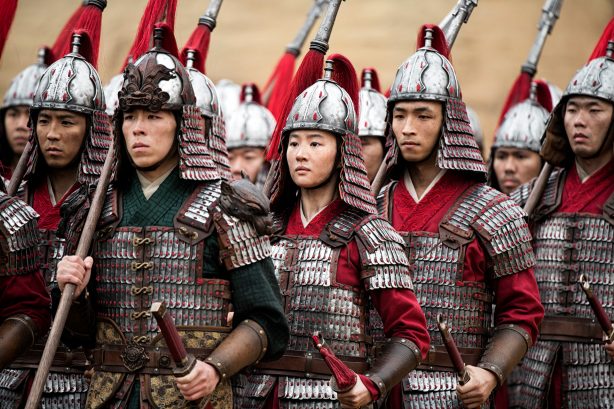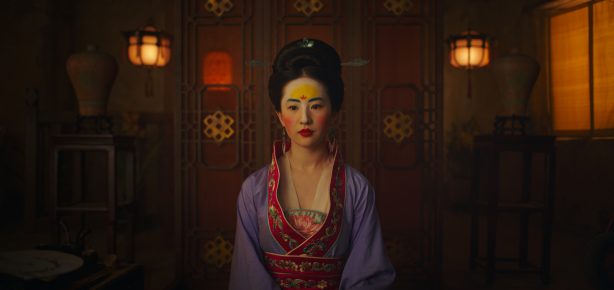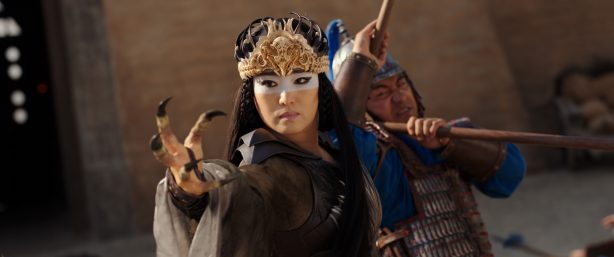Beginning today, audiences will experience a centuries-old legend in a brand-new way as Disney+ brings Disney’s Mulan directly to fans to stream with Premier Access before it is available to all of the streaming service’s subscribers. The film is a live-action reimagining of the legendary female warrior first immortalized in the narrative poem “The Ballad of Mulan,” but the film’s director believes the epic tale to be timeless. “What drew me to this story was Mulan herself,” says Niki Caro. “Her journey from village girl to male soldier to warrior and hero is a story that’s as relevant and as resonant as it was when it was first written over 1,500 years ago.” Caro set out to tell the story with both a modern sensibility and a deep respect for the culture from which it originated.
“It’s tremendously important to me in this film, and indeed in all the movies I’ve made, to be thoughtful and respectful of the culture, and to be collaborative. Every department of this movie did research into Chinese culture, painting, history and accounts of war,” says the director.

To inform the design of the film’s costumes—which numbered more than 1,000 in all—costume designer Bina Daigeler embarked on a three-week-long research tour of China. Daigeler and the filmmakers drew inspiration for the film’s production design, architecture, makeup, weapons and clothing from a number of Chinese dynasties, including many elements from the Tang dynasty, which ruled China from 618 to 907.
“The costumes, like every aspect of the film, were based on research, from talking to experts to visiting museums, to reference and art books,” Daigeler says. “Of course the costumes for this film are much more elaborate than the costumes in [Walt Disney Animation Studios’ 1998 film], but I allowed a few inspirations from the animated film to sneak in, which Mulan fans will recognize and hopefully enjoy.”

Daigeler based many of her costume designs on the rich, symbolic language she encountered during her research. Mulan’s matchmaker dress—the costume that Daigeler is most proud of—features embroidered images of a phoenix (a symbol of female energy) and magnolias, which the costume designer chose to serve as the protagonist’s signature motif. Daigeler incorporated animal imagery into the armor worn on the battlefield by the characters in Mulan, staying true to what would have been the norm during the Tang dynasty. Turtles are a recurring motif on Commander Tung’s armor, helmet and belt; while the Emperor’s green tunics display dragons and clouds. Daigeler notes, “When you look at ancient Chinese history and art, you see how detailed everything was and how much time they spent making [the armor].”

Color and the symbolism behind each hue also helped guide Daigeler’s designs. At the time in which Mulan is set, the color yellow was reserved for the Emperor; while the mysterious, witch-like Xianniang is clad only in light-colored clothing, a choice inspired by the idea of white in China being the color of death, as well as the color of purity. The two meanings attributed to the color red made it the perfect choice for Mulan’s warrior tunic, according to Caro. “It’s the color of fire but it also represents joy. And what an amazing inspiration for our hero, Mulan. The Imperial Army wears red, for all of those reasons. And, of course, Mulan doesn’t stand out as a soldier in the Army. The whole point is that she blends in,” the director says. “But when she makes the decision to be true to herself and who she is, when she sheds her armor and loses her topknot, then the red of her tunic is exposed, as is her very strong female body. It’s a beautiful and appropriate color for Mulan. It makes her glow and it reminds us how powerful she is.”
The attention to detail and painstaking work by Daigeler and her team helped to set the tone for the film, Niki Caro shares. “On screen, you can see the authenticity in these garments,” she says. “All the fabrics are so rich. There’s such deep texture, and so much care went into the making of them that you feel like you’re being immersed in another century.”